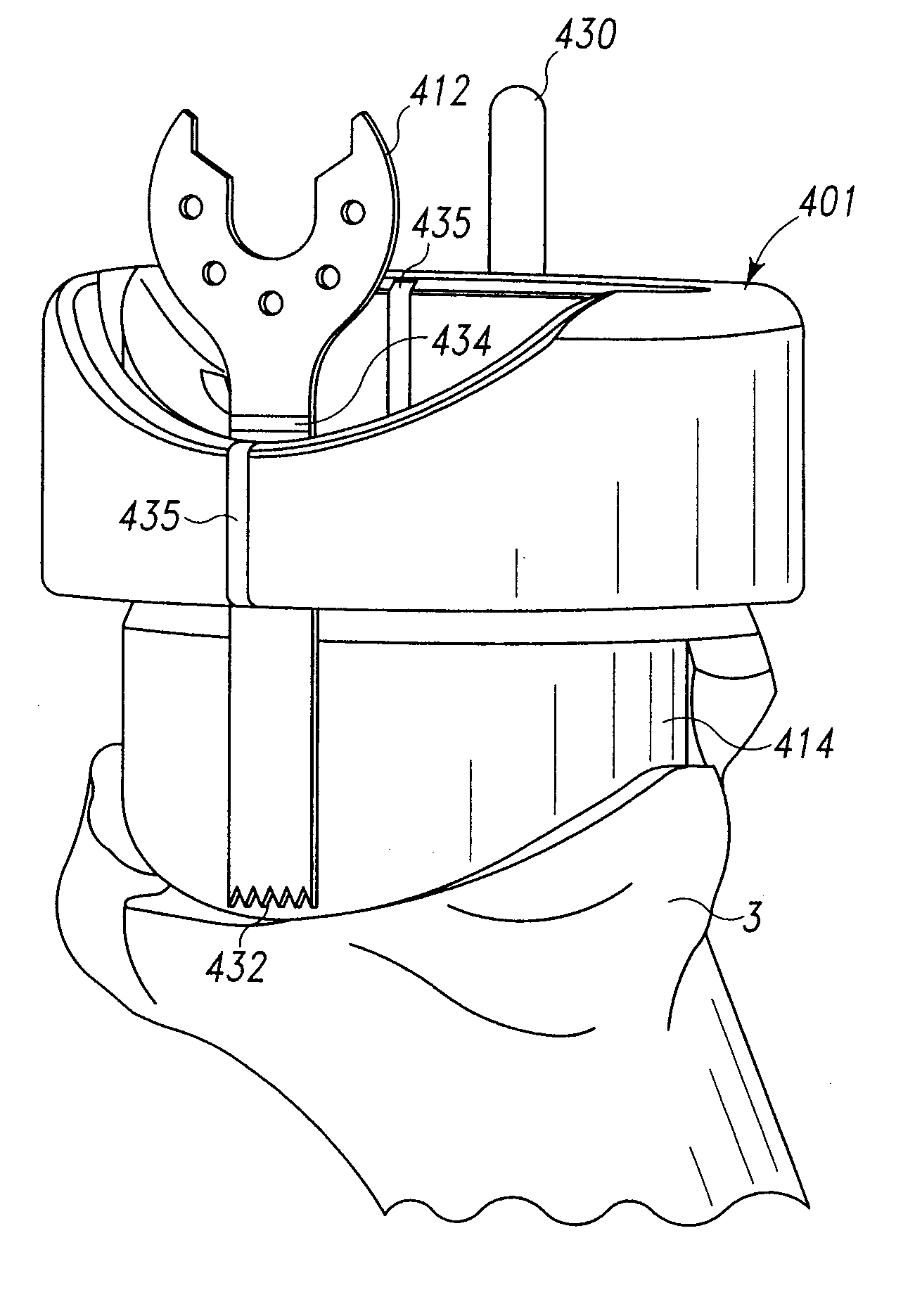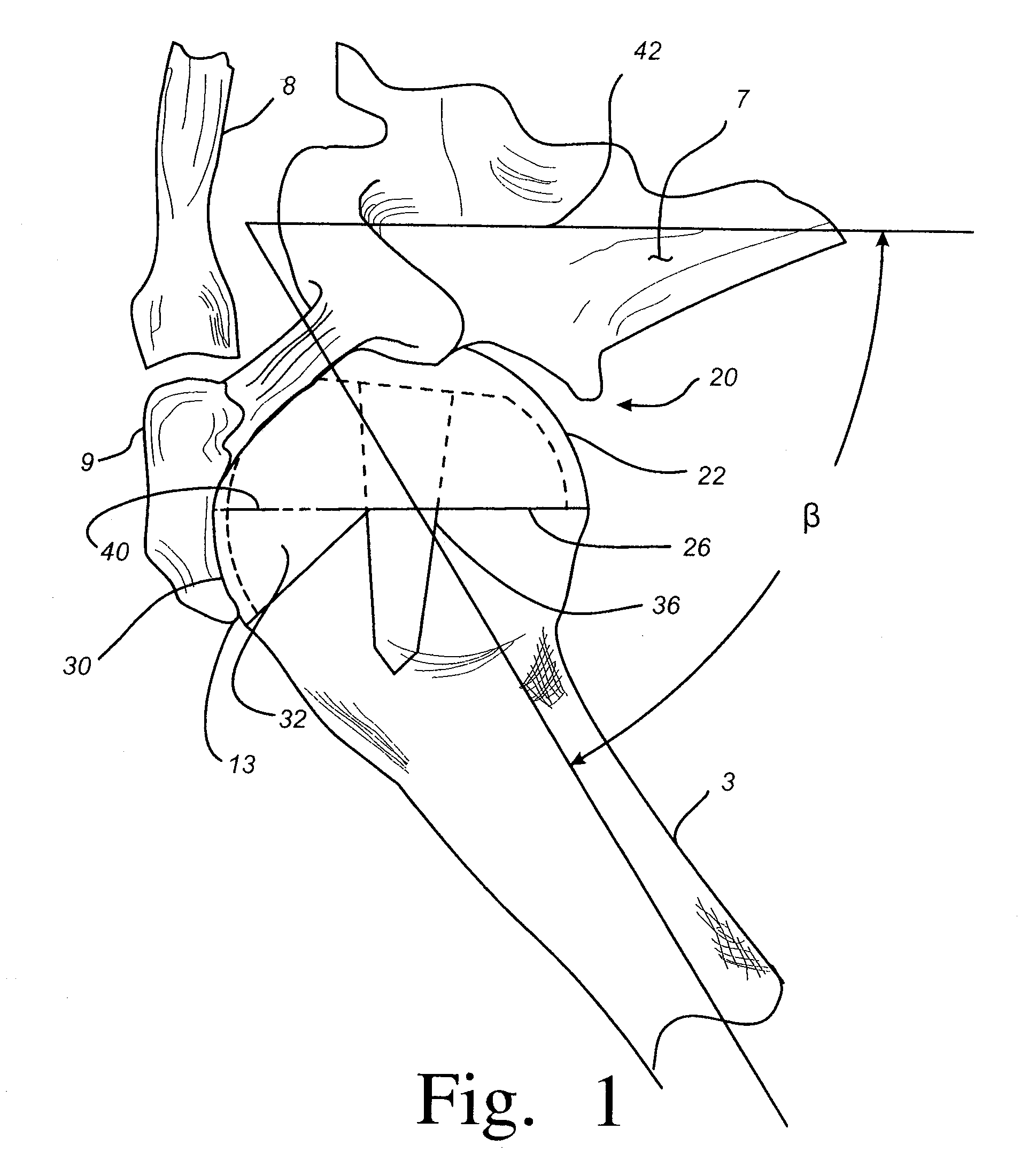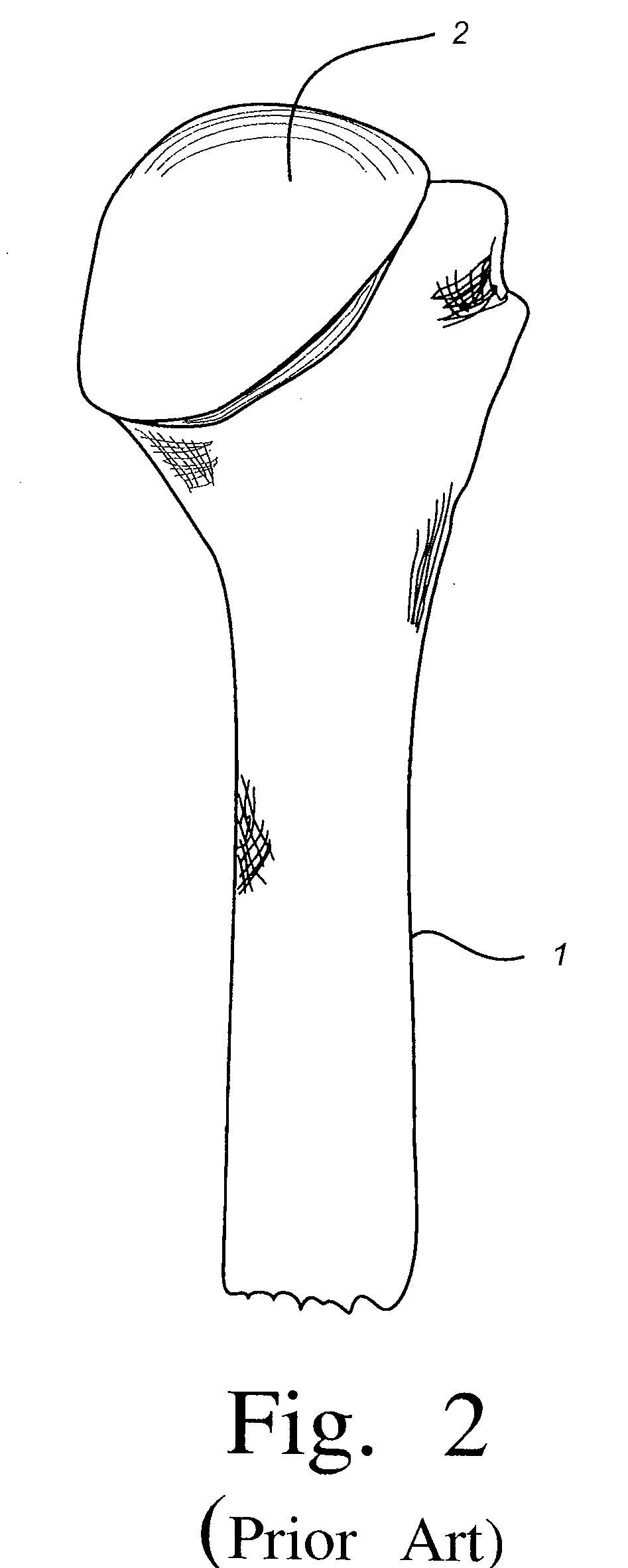Cutting guide for use with an extended articulation orthopaedic implant
a cutting guide and articulation technology, applied in the field of orthopaedics, can solve the problems of deterioration of the patient's rotator cuff, accelerated humeral articular destruction and acromion erosion, and significantly limited patient's range of motion, so as to achieve low friction bearing surface, minimal bone loss, and low friction bearing
- Summary
- Abstract
- Description
- Claims
- Application Information
AI Technical Summary
Benefits of technology
Problems solved by technology
Method used
Image
Examples
Embodiment Construction
[0066]Embodiments of the present invention and the advantages thereof are best understood by referring to the following descriptions and drawings, wherein like numerals are used for like and corresponding parts of the drawings.
[0067]Referring now to FIG. 7, an embodiment of the present invention is shown as prosthesis 20. The prosthesis 20 is used in performing bone preserving joint arthroplasty. The prosthesis 20 is to be fitted to the head of a long bone. For example, the long bone as shown in FIG. 7 is in the form of humerus 3. The prosthesis 20 includes a first body 22 having an articulating surface 24 defining a generally circular outer periphery 26. The first body 22 also includes a second surface 28 opposed to the articulating surface 24. The second surface 28 is adapted to receive the head of the humerus 3.
[0068]The prosthesis 20 further includes a second body 30 operably associated with the first body 22. The second body 30 has a second body articulating surface 32 extendin...
PUM
 Login to View More
Login to View More Abstract
Description
Claims
Application Information
 Login to View More
Login to View More - R&D
- Intellectual Property
- Life Sciences
- Materials
- Tech Scout
- Unparalleled Data Quality
- Higher Quality Content
- 60% Fewer Hallucinations
Browse by: Latest US Patents, China's latest patents, Technical Efficacy Thesaurus, Application Domain, Technology Topic, Popular Technical Reports.
© 2025 PatSnap. All rights reserved.Legal|Privacy policy|Modern Slavery Act Transparency Statement|Sitemap|About US| Contact US: help@patsnap.com



